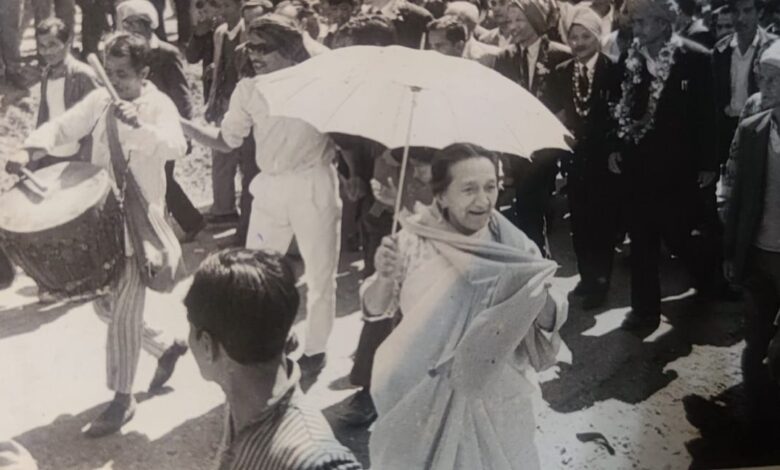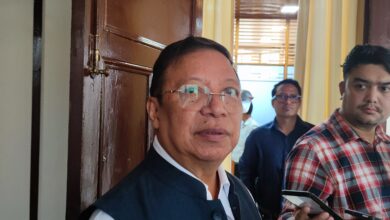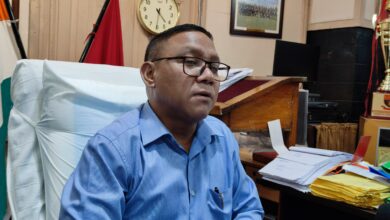Media & the movement: Role & responsibilities over two decades

Dr MPR Lyngdoh
The press played an important role during the Hill State movement, particularly in creating awareness on the movement. Although, media is not like today, the age of information explosion, where we can easily access any information from the media, print and electronics.
During the time of the movement, we had a few newspapers, with no television or social media. It was during the national movement in our country, when the British introduced the printing press. The educated Indians immediately realised that the press could play a great role in educating the public and influencing policies. Many Indian leaders played an important part in starting newspapers. The press gradually became a major weapon in the national movement.
Newspapers and literature contributed much to the development of the national awakening; they highlighted not only the tendency of British imperialism but also roused the spirit of the Indians towards attaining freedom. Various vernacular languages developed and newspapers began to be published in different Indian languages, where they opposed and criticised the exploitation and oppressive administrative system of the British.
The speeches of the national leaders were published in those newspapers and magazines and people began to take interest in the movement fearlessly. In the same way, during 1952-1972, we saw an expanded trend in the growth of literature in the Khasi, Jaintia and Garo Hills which touched the diverse fields and played a very important role in the life of the people during the hill state movement.
Besides the earlier writers who have contributed to the growth of literature, there were many books, newspapers and journals that were published during the period, which highlighted and created awareness among the people and contributed to popularising and enriching Khasi literature. The contribution of Khasi journalism to the hill state movement cannot be ignored.
The movement for a separate state started when people of the hill areas of the then undivided Assam strongly felt that they could preserve their identity by having a state of their own. The British government granted independence to our country on August 15, 1947, and India became a Republic on January 26, 1950.
The first General Election was held in 1952. The Election to the United Khasi and Jaintia Hills District Council was also held in 1952 for 18 seats and the governor nominated six members. The United Khasi and Jaintia Hills District Council was inaugurated on June 27, 1952. On this day there was a Black Flag demonstration by the Khasi Students Association (KSA) to oppose the nomination of the six members and also to demand a separate state.
The movement first surfaced in 1952 through the Khasi National Durbar, which demanded a separate state and proposed to make Assamese the state language of Assam. The Khasi National Durbar was formed in 1923, comprising the chiefs — the Syiem, Lyngdoh, and the other heads of the Khasi states.
Before India’s independence, the Khasi states had signed a series of treaties with the British government. The Khasi National Durbar criticised the government for not respecting the status of the Khasi states as independent and semi-independent as agreed upon by the British Government and the Khasi states.
In 1954, the leaders of the hill people formed the Eastern India Tribal Union (EITU) to struggle for a separate state. Captain Williamson Sangma, who was the Chief Executive Member (CEM) of the Garo Hills District Council called for a meeting of the autonomous districts in Tura. This conference, popularly known as the Tura Conference, met from October 6-8, 1954. Besides other demands, the conference resolved to submit a memorandum to the States Reorganization Commission (SRC) to demand a hill state.
The struggle for a separate state gained momentum with the formation of the All Party Hills Leaders Conference (APHLC) on July 6, 1960. Since its inception, the APHLC believed in attaining statehood through the method of non-violence and achievement of the goal through peaceful and constitutional methods as propagated by the Father of the Nation, Mahatma Gandhi.
The demand of the Plains and the Assam Pradesh Congress Committee (APCC) for declaring Assamese as the state language was opposed by the hill people. BP Chaliha, the then Chief Minister of Assam, announced on June 3, 1960, that the official language bill would be introduced in the Assembly on the basis of the recommendation made by the APCC. The people of Assam welcomed it. However, the people of Cachar and the hill districts resented.
The permission to introduce the official bill in the Assembly was sought on October 10, 1960. It was opposed by Jormanik Syiem, A Thanglura, Captain Williamson Sangma and others. The opposition to the language bill was tremendous, and the tribal members in the Chaliha Cabinet resigned as a protest on October 1960, the members of the autonomous districts in the Legislative Assembly staged a walkout when the Chief Minister introduced the Language Bill. The hill state movement continued with various programmes and it became a mass movement.
Indira Gandhi was the Prime Minister when the Assam Reorganisation Bill was introduced in Lok Sabha on December 22. The Bill was passed by both the Houses of Parliament on December 24, 1969, and it was considered as a Christmas gift for the hill people. The autonomous state of Meghalaya was born on April 2, 1970. It was accepted by the leaders as a fair trial. People were not happy with the autonomous state and wanted a full-fledged state. The APHLC at the 22nd session held in September 1970, urged the government, to take immediate steps to make Meghalaya a fully separate state.
The Hill State People Democratic Party (HSPDP) under the leadership of (L) Hopingstone Lyngdoh opposed the autonomous state and demanded full statehood. The HSPDP organised a Black Flag Demonstration to show their opposition during the visit of Prime Minister Indira Gandhi to inaugurate the autonomous state. She realised that the people were not happy with the autonomous state and wanted a full state.
Towards the close of October 1971, the North Eastern Areas Reorganisation Act 1971 was introduced in the Lok Sabha, and it was passed by the House on December 22, 1971. The Act regularised the reorganisation of the region into five states — Assam, Manipur, Meghalaya, Nagaland and Tripura and two territories of Mizoram and Arunachal Pradesh which later were given full statehood. The full state of Meghalaya was finally inaugurated on January 21, 1972, by the then Prime Minister Indira Gandhi.
Coming to the role of the media, we saw a number of newspapers, journals, books and others that were published during the hill state movement. In 1952, Margaret Barr brought out a book entitled ‘Ki jingrwai India’ (The songs of India) exhorting the people to love their country.
In 1952 and 1953, two Khasi booklets were brought out, concerning the social and political situation. BB Lyngdoh wrote about the Khasis and Ka jingtrei ka District Council (the working of the District Council). He highlighted the discontent and restlessness among the Khasis in Shillong at that time.
In 1953, (L) DD Basan wrote ‘Ka jingpyrta u khun ka Ri’ (The call of the son of the soil). The Hills Union brought out in 1954, the Constitution and the Hill State Rev. JJM Nicholsroy brought out a book titled ‘Ka plan ba la tyrwa’ (The plan which had been offered), on the Nehru plan that the Eastern India Tribal Union (EITU) be part of the Assam ministry. JE Tariang brought out a newspaper namely U Pyrman (The watchman) opposing the hill state movement. Hipshon Roy Kharshiing wrote in Aphira in July 20, 1989, that Tariang as President of the Congress opposed the hill state movement at the time when the United Khasi Jaintia Hills was under the District Congress Committee (APCC). He was with the Congress Party in Ri Hynniewtrep (Hynniewtrep Land) that wanted the Khasi-Jaintia State at that time. Rev. JJM Nicholsroy opposed the hill state movement through his newspaper, ‘Ka Pyrta u Riewlum’ (The voice of the hillman) brought out in 1956.
There were other newspapers supporting the movement like ‘Ka Rilum mihngi’ (The Eastern Hills land) by EM Reade in 1967, and Jowai Mail by LG Shullai in 1958. In 1955, the Annual magazine of the Khasi Students Association (KSA) came out. In 1957, Ka Syngkhong was published. In 1960, F. Giri brought out U Nongsain Hima (The architect of the State). I. Nongkynrih brought out ‘U Hynniew Trep’ (The Seven Huts). An English weekly, Hill Chronicle was in circulation during the movement which voiced the sentiments of the people for a hill state.
In 1961, DD Basan published a booklet entitled ‘Kaei ka dur synshar Scottish Pattern’ (What is Scottish pattern). He questioned the design of the Scottish pattern offered to the hill people. In 1965, Basan published another book, ‘No State Within A State’, when the Nehru plan was offered for the hill areas. He also brought out a book ‘We Want Hill State’.
In 1953, DNS Wahlang brought out a book titled ‘Greater Assam’, published by the Government of Assam, it was a compilation of his various articles. In 1963, HE Pohshna started a newspaper ‘U Shabuk (The Cane). More newspapers appeared during this period when people realised the demand for a hill state.
Hoover Hynniewta brought out ‘Ka step’ (The Morning) but later it was discontinued. JD Pohrmen brought out ‘Ka Lympung Rilum’ (The Arena of the hill land). This newspaper was the mouthpiece of the hill state movement to spread the message of the struggle for a separate hill state. The government came to know about this newspaper. Pohrmen was aware of that and it was told that he said he would rather quit his job than discontinue the newspaper.
In 1954, JS Ryntathiang brought out ‘U Nongpyrta’ (The announcer). In the same year, ‘Ka Sympa’ of OS Pakyntein came out. The Jaintia Cultural Youth Association brought out ‘Ka Wyrta’ (Announcement). In 1961, R. Shemphang Lyngdoh brought out a magazine ‘Ka thymmei’ (Origin). R. Soanes started a quarterly journal named ‘Ka Ryngngi’ in 1961. In 1962, Norman Sing Syiem brought out ‘Ka Mei Rilum’ (Mother of the Hills). P. Wahlang started ‘U Khatarbor’ (one who has twelve powers, symbolising a strong man) in 1963. The Directorate of Information and Public Relations, Government of Assam, started ‘Ka Khubor jingroi’ (News on development). In 1967, Philbert Rajan Roy brought out a newspaper titled ‘U Tiew Pathai Khubor’ (A Flower that spreads news).
In 1969, G. Passah brought out ‘Ka mihsngi’ (Sunrise). In 1967, SN Roy brought out ‘U kyrwoh Rilum’ (Hill messenger). In 1969, L. Filbert Shullai wrote ‘Ba ioh ngi klet’ (Lest we forget) Parts I, II and III and on Meghalaya.
In 1970, Ambrose BM Roy started ‘U Nongprat Lynti’ (one who leads the way). Ka Sur Shipara (The voice of brotherhood) came out as a weekly magazine of the past pupils of Don Bosco. EB Lyngdoh brought out ‘U Korbar Ri’ (meddle man). It was discontinued for some time but came out again in 1976. In 1969, BR Lyngdoh wrote ‘Khyndiat shaphang ka Meghalaya State Act bad kumno ki riewlum ki la poi shata’ (Meghalaya State Act and how the Hill people reach to it).
In Garo Hills, a number of newspapers, journals and magazines were published. In 1953, Achik Songbad or news in Garo started by Narayan M. Marak. Pring prang or morning, a political weekly newspaper, a first of its kind in Garo language, was published in 1955 with Mody K. Marak, the then executive member of the Garo Hills District Council, as its editor.
Another journal, Kubarangba or language and voice, was started and managed by the college students of Gauhati and Shillong in 1958. A’Sangni Songbad or news of the country, a wholly government-financed journal, was started by DN Majumdar, the then Block Development Officer of Selsella, West Garo Hills. It was published during 1960-1962. Garo Bulletin under the title Do a mek, another government-sponsored monthly magazine, was published in 1964 from the office of the District Information and Public Relations, Tura.
Chadam be or the youth, a monthly magazine, was started in 1965 by the Garo Youth Club. Argison G. Momin, the then Lecturer of Economics at Tura Government College, was the editor of this periodical. Nokdangni Ripang, or the friend of the family, was started by the Mothers’ Union, Tura in 1966. The first editor was Verma Ingty followed by Cornelia Tshikano Brucelish K Sangma and Viola B Sangma. Pring prang or Morning Star, a journal started by the young members of the Catholic Church with Lois Krenath as the editor, was started in 1969. The Garos of Goalpara started a magazine called Kubalme with Mollinath Sangma and Harison Sangma as its editor and assistant editor, respectively. It came out in 1972.
Other features of the Hill State movement were the patriotic songs composed by professional writers, singers and musicians. Some of these songs are ‘Ri Khasi Ri jong nga’ (Khasi land my land) composed by Phrangsngi Kharlukhi and music by SN Roy.
Ka Dak ka jingjop (The sign of victory), again composed by Phrangsngi Kharlukhi, u Khynriam, u Pnar, u Bhoi, u War, composed by EB Roy Wanswett, Ki Samla Rilum (The Youth of the Hills) and Pynkhreh Samla (get ready youth) composed by EB Lyngdoh.
Some others are Ka 24 tarik u Risaw (The 24th of October), Ngin kiew sha khlieh, shaphrang ngin mih (we will climb to the top and reach higher). Some songs were in English, like The land of the roses, words and music by Victor G. Bareh, and Eastern Hills and Freedom call composed by Phrangsngi Kharlukhi. The Laitumkhrah Circle of the NVDA Volunteers used to sing The sacrifice songs of the Volunteers composed by FL Kharmawphlang and music by CD Lyngdoh.
All these patriotic songs inspired people, including the Nonviolence Direct Action Volunteer (NVDA), to fight for the separate hill state and for their rights and self-assertion. These songs were sung during the movement, whenever there were hartals, processions, meetings for the propagation of the movement and other occasions, like during the visit of Indira Gandhi to Shillong.
The slogan during the hill state movement was, “We want Hill State, no Hill State no rest”. The cherished dream of the hill people was fulfilled when Meghalaya became a full state. The success of the movement and the creation of Meghalaya was due to the cooperation and mass participation of the people, the wisdom and foresight of the leaders and the sacrifice of the Nonviolence Direct Action Volunteers.
On the achievement of the struggle for a separate state, Professor GG Swell, one of the leaders of the hill state movement said, “Meghalaya will be a patch of beauty and grace and a shining outpost in the country”.
Captain Williamson A. Sangma, the first Chief Minister of Meghalaya, in his welcome address to Prime Minister Indira Gandhi during the inauguration of the state, said, “We are determined to give priority to the proper utilisation of our natural resources, and we have every confidence that in the years to come, we shall succeed in developing a self-sustaining economy, and will be in a position to make a positive and significant contribution to the nation’s resources”.
Let each one of us introspect whether or not we have really achieved our dreams of getting our own separate state.
(The author is former principal of Shillong College)




